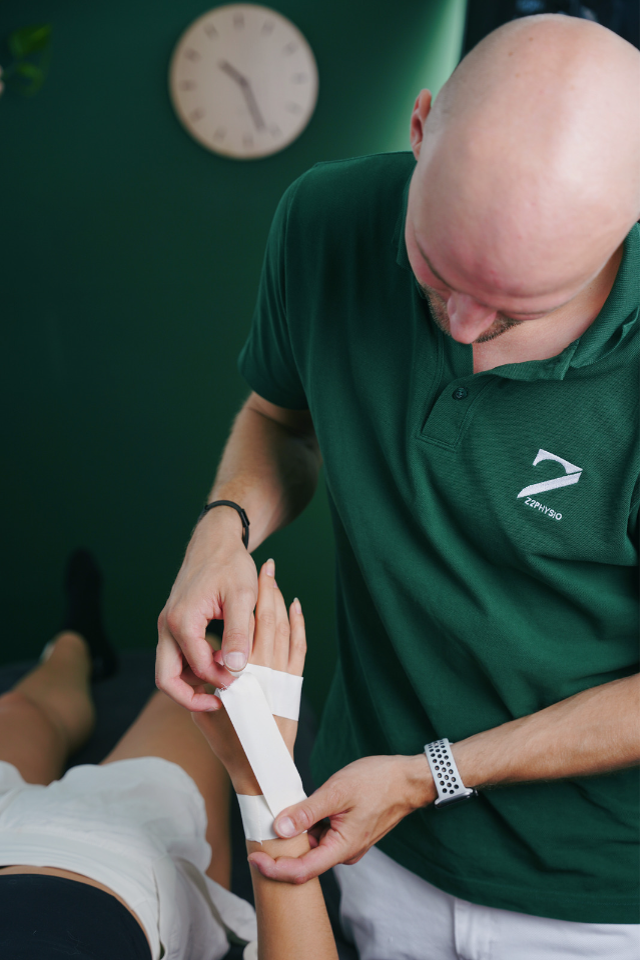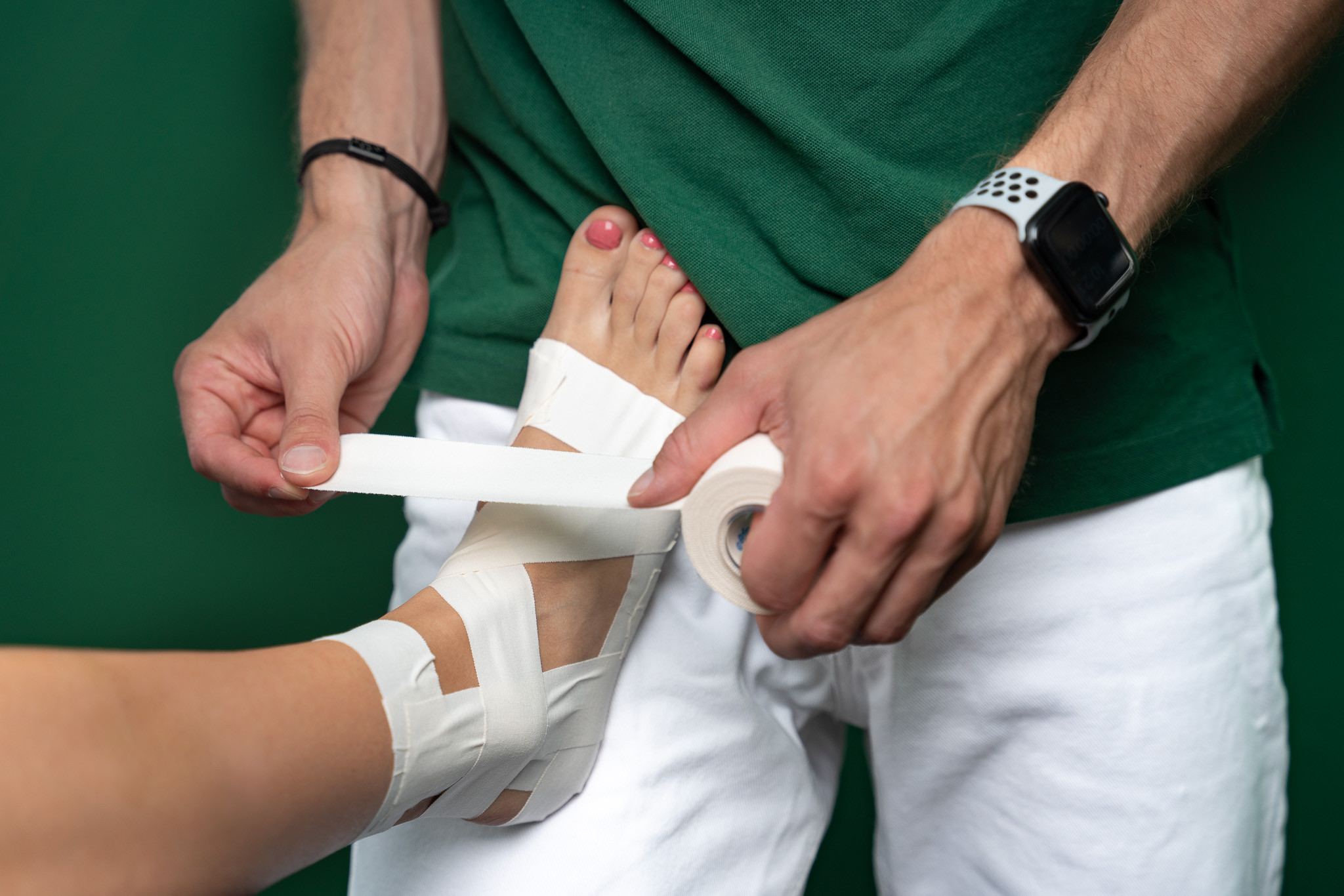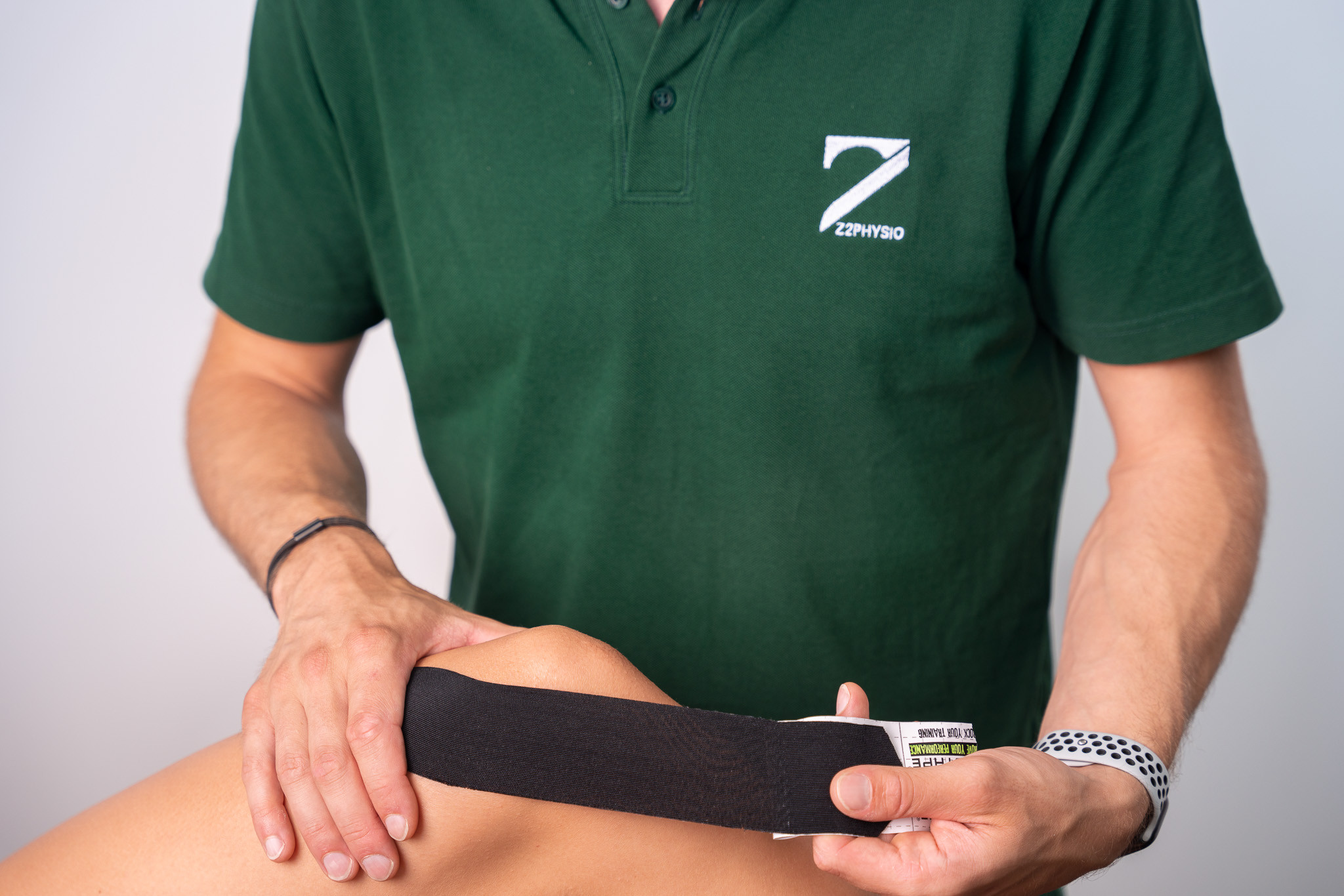Taping

What is Taping?
Taping refers to the application of functional bandages on the body.
What are the different types of tapes?
Taping is mainly categorized into rigid and elastic tapes.
Rigid tapes, such as Leukotape, are made of non-elastic cotton fabric and are primarily used for fixation purposes. The goal of applying rigid tapes is either to support and secure a specific body region preventively or to relieve an injured structure. They can also be used to prevent friction points. A typical example of using a rigid tape is stabilizing the ankle before a basketball game. The classic color of Leukotape is white. You often see them on TV during sports like handball or volleyball, especially when you watch athletes' fingers/hands.

Elastic tapes, such as Kinesiotape or Flexotape, are made of elastic cotton fabric, often mixed with elastane. Due to their dynamic nature, they can be used for various applications. They can help increase blood circulation, support local awareness, and provide the wearer with a positive sensation. One common use of elastic tapes, for example, is applying a tape on the thigh to support muscle function. They are available in many different colors. Nowadays, you regularly encounter them on TV, and you can see athletes using them on various body regions during sports activities.

Where can you apply tape?
Tapes can theoretically be applied anywhere on the body where it is safe to do so. The choice of the tape application site depends on the goal of the taping. Some regions are more suitable than others for specific applications. For example, rigid tapes work well on fingers/hands or foot/ankle regions. Elastic tapes can be applied almost anywhere on the body.
What needs to be considered when using tapes?
As previously mentioned, tapes should only be applied to safe regions. That means tapes should not be applied to open wounds or mucous membranes. Other risk factors need to be individually considered. The question of appropriateness arises. While it is possible to use Leukotape for shoulder immobilization, it tends to be difficult and uncomfortable for the wearer. In such cases, elastic tape is likely to be a better option. A trained therapist can provide guidance on this matter.
Also, one should consider the comfort of wearing the tape. Due to the stabilizing effect of Leukotape, it should not be applied too tightly, as it could impede blood flow. With elastic tapes, this risk is significantly lower. Additionally, rigid tape is typically used for a single sports session or a short period for immobilization. Elastic tapes, on the other hand, can be worn for several days. Therefore, showering with an elastic tape is usually not a problem. However, when drying off, care should be taken not to peel off the tape, as it retains moisture and may cause a wet feeling for a few hours. Leukotape usually does not tolerate showering.
Both types of tapes use an acrylic adhesive. Some individuals may have allergic reactions to it, which can manifest as itching and/or skin redness. If this occurs, you can simply remove the tape and clean the skin. An indicator is adhesive bandages: if you tolerate them well, you are likely to have a similar experience with tapes.